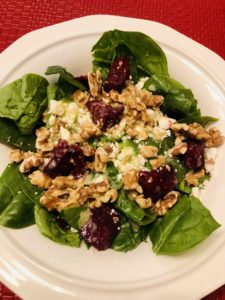SWEET DREAMS
By Dr. Jay Rosen
Sleep is crucial for our overall health. Research show adults need anywhere between 6 to 9 hours of uninterrupted sleep a night, however over 35% of adults report logging less than 7 hours of sleep in a typical 24-hour period.
Experts also estimate between 50 to 70 million American adults have a sleep disorder, with insomnia being the most common issue. Thirty percent of adults report short-term insomnia issues, while 10% struggle with chronic insomnia.
So, what is preventing us from getting the rejuvenating, quality sleep our bodies need?
There are a variety of substances that can negatively affect our sleep, including alcohol, nicotine, other drugs and caffeine. A person can also have an underlying allergy or food sensitivity that may be causing disruption. And, it’s not just what you eat that can cause sleep disturbances. When you eat or drink can play a factor, as well. Drinking too much water late in the evening, or not enough water during the day, may interrupt your sleep at night. Eating right before bedtime may not be the best practice unless suggested by your health care practitioner.
Certain physical conditions like sleep apnea, which affects 25 million U.S. adults, can impact sleep quality. Other sleep disruptors include frequent urination (as may happen in pregnancy), pain and physical discomfort. Behavioral and mental disorders, such as depression, stress, and anxiety, may cause the brain to “wind up” so that even if a person is tired in bed, his brain will not allow him to relax into sleep.
Past and present injuries can also cause sleep issues. When we are injured, oftentimes the eyes are driven to look in the direction of the injury. We even turn our heads in that direction and rub the area if appropriate. Sometimes an injury continues to reside in the brain and the corresponding nerves of the injured area. That means that even if one does not feel pain, the brain can still be interpreting pain patterns.
When a person sleeps through the night, he experiences rapid eye movement sleep (REM) and non-rapid eye movement sleep (NREM). During REM, the brain is highly active and the eyes rapidly twitch. This is the dreaming stage and each time the eyes are driven in the direction of an injury, new or old, the brain can move a person from the REM stage into the awakening stage. Even if the person goes back to sleep and does not notice this awakening, the brain and body know. These awakenings can contribute to lower sleep quality. To prevent this, it is always better to correct injuries as soon as possible in order to decrease the interference that results from waiting for the pain to just go away.
So, what can we do to improve our sleep? These simple steps can help:
- Go to sleep and wake up around the same time each day
- Keep your bedroom pitch black by eliminating noises, electronics, and lights
- Have a firm, comfortable mattress and pillow
- Keep the room cool with adequate humidity (69 degrees)
- Take a warm bath, hot tub, or sauna before bed, preferably with bath salts such as Epsom, Magnesium, or Dead Sea salts.
- Avoid watching TV and/or using your smartphone or computer at least two hours before bedtime
- Avoid drinking alcohol at least three hours before bedtime
- Avoid caffeinated beverages after 12 p.m.
- Use your bed only for sleep. If you read before bed, read on a couch or chair in another room. When you get tired, go to your bed for sleep.
Broader lifestyle modifications can also make a significant difference in your overall sleep quality:
- Obesity plays a strong role in sleep disorders, so consider adopting a diet low in carbohydrates and processed oils
- Eliminate toxic substances like nicotine and foods you might be sensitive to
- Decrease caffeine consumption
- Manage stress better with visual imagery techniques, a written weekly plan, and exercise
- Visit your chiropractor or naturopath regularly to help promote overall physical health.
Keep in mind, sedative sleeping supplements, such as melatonin, will only help to a certain degree and are better for short-term use. If used long term, these supplements may make things worse. The body can become dependent on those aids and decrease natural production of melatonin and other critical hormones and neurotransmitters.
Pathways to Healing specializes in holistic chiropractic care. Doctors draw on a variety of techniques, including chiropractic, kinesiology, nutrition, food allergy testing and lifestyle counseling to assist clients in achieving optimal health and wellness in one setting. Pathways to Healing is located at 1022 Founders Row, Lake Oconee Village, Greensboro. The office can be reached at 706-454-2040.





